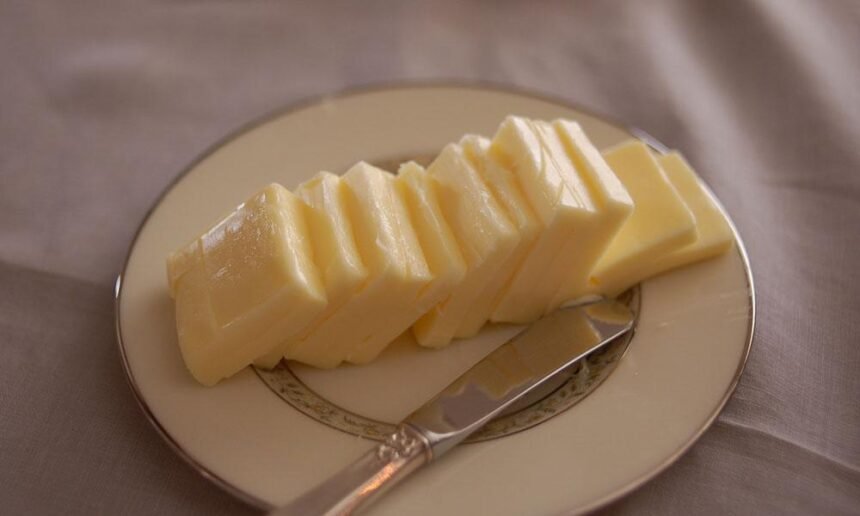Butter has been a staple in kitchens around the world for centuries. In recent years, raw butter—unpasteurized, minimally processed, and brimming with natural nutrients—has captured the attention of health enthusiasts and culinary connoisseurs alike. But what exactly distinguishes raw butter from its processed counterparts, and why should it become a regular part of daily nutrition? This article explores the unique health benefits of consuming raw butter and its relatives, like raw shea butter and raw cocoa butter, while guiding readers on sourcing, safety, and culinary inspiration.
What Is Raw Butter?
Raw butter is crafted from raw cream that comes from grass-fed cows, goats, or sheep. Unlike regular store-bought butter, which is heated and pasteurized, raw butter remains in its most natural state. The cream is gently churned at room temperature, preserving its healthy bacteria, probiotics, enzymes, and a spectrum of vitamins and minerals that are often lost in the pasteurization process.
Nutritional Profile of Raw Butter
Raw butter is a nutritional powerhouse. Each serving contains saturated and unsaturated fats, high concentrations of vitamins A, D, E, K2, and antioxidants such as beta carotene. It’s a valuable source of minerals like selenium and iodine, as well as lauric acid, a fatty acid celebrated for its anti-fungal and immune-boosting properties. These nutrients are more readily available in raw butters thanks to the absence of heat treatment.
Key nutrients in raw butter:
-
Vitamin A (essential for vision, thyroid, and immune function)
-
Vitamin D (crucial for calcium absorption and bone health)
-
Vitamin E (protects against free radicals, supports cardiovascular health)
-
Vitamin K2 (important for bone metabolism and arterial health)
-
Healthy fats (support brain, hormone, and organ function)
-
Beta carotene
-
Selenium (a powerful antioxidant)
Raw Butter vs. Processed Butter
During pasteurization, many of the beneficial enzymes, probiotics, and some vitamins in butter are destroyed by heat. Raw butters, by contrast, keeps these delicate compounds intact, offering more comprehensive support for the digestive and immune systems. Studies and holistic nutritionists argue that raw butter is easier to digest and more hydrating for the body, particularly for those sensitive to dairy.
Health Benefits of Consuming Raw Butters
1. Immune-Boosting Properties
Raw butter is abundant in immune-enhancing vitamins—A, D, E, B12, and K2—making it powerful for fortifying the body’s natural defenses. These fat-soluble vitamins work together to bolster immunity, fight off infections, and support cellular health.
2. Aids Digestion and Gut Health
The probiotics and enzymes found in raw butters make digestion smoother and can be especially helpful for individuals with mild lactose intolerance. Lauric acid in raw butter acts as a natural antimicrobial, combating harmful bacteria and supporting overall gut balance.
3. Supports Hormonal and Endocrine Health
Raw butter is rich in cholesterol—contrary to outdated misconceptions, dietary cholesterol is a building block for the body’s hormone production, especially sex and adrenal hormones. Consuming healthy fats from raw butters can optimize hormone synthesis and help regulate mood, energy, and fertility.
4. Promotes Brain and Nervous System Function
Neurological tissues thrive on saturated fat, and raw butter contains a high percentage of these “good” fats needed for cell membranes and brain structure. Children and adults alike benefit from the healthy cholesterol and arachidonic acid in raw butter, contributing to sharper brain development and cognitive resilience.
5. Strengthens Bones and Teeth
Raw butter’s unparalleled combination of vitamin D, calcium, and vitamin K2 improves calcium absorption and utilization. This synergy not only fortifies bones but also supports healthy teeth and reduces the risk of cavities and osteoporosis.
6. Protects Heart Health
While saturated fats were once vilified, new research shows that there is no direct correlation between eating raw butters and heart disease. In fact, the presence of conjugated linoleic acid (CLA), omega-3 fatty acids, and vitamin E in raw butters can lower inflammation and protect against arterial plaque build-up.
7. Benefits for Skin and Complexion
The nourishing fats and vitamin A in raw butter enhance skin hydration, elasticity, and overall appearance. This is one reason why raw shea butter and raw cocoa butter feature in skin and haircare routines worldwide.
Expanding to Raw Shea Butters and Raw Cocoa Butters
Raw shea butter and raw cocoa butter, while traditionally applied topically, are also consumed in some cultures for their health benefits.
-
Raw shea butters: Contains healthy fatty acids, antioxidants, and vitamins A and E—making it popular not just for skin but also as a supplementary fat source in homemade foods and conditioners such as “raw shea butter shea moisture conditioner”.
-
Raw cocoa butters: Offers rich doses of polyphenols, which may help reduce inflammation and improve cardiovascular health when consumed in moderation.
These natural butters align with the holistic philosophy of consuming “clean,” minimally processed fats.
Locating Raw Butters Near Me
Growing demand for raw butter has prompted local farms, specialty markets, and health food stores to offer high-quality raw dairy. Online directories and platforms can help locate sources of “raw butter near me” with an emphasis on local and organic providers. When purchasing, seek sellers who maintain rigorous standards of animal welfare and hygienic production, as raw dairy products must be handled with care to ensure safety.
Culinary Uses and Storage
Raw butter has a delicate, creamy flavor that amplifies the taste of both sweet and savory dishes. It can be used for:
-
Spreading on sourdough or wholegrain bread
-
Folding into mashed potatoes or steamed vegetables
-
Finishing sauces or risottos
-
Baking or making traditional confections, though heating may reduce some raw benefits
Raw butters should be stored in the refrigerator, ideally in a covered container. When aged, it may develop a tangy taste but can still offer unique beneficial bacteria.
Safety Considerations
While the nutritional advantages are clear, it is important to acknowledge the safety conversation around raw butter. Because it is unpasteurized, there’s a minor risk of contamination from harmful pathogens if production and storage standards are poor. Reputable producers, however, rigorously test their products and ensure that animals are healthy and well-tended, making raw butters exceptionally safe for most people.
Those with compromised immune systems, young children, and pregnant women should consult healthcare providers regarding the consumption of raw dairy products.
Frequently Asked Questions
Is raw butters legal?
Raw butters is legal in many regions but faces restrictions in others. Always check local laws and regulations.
Is there a taste difference?
Yes! Raw butters is noted for its richer, creamier flavor with nuanced notes distinct to the animals’ diet and environment.
Can I make raw butter’s at home?
Yes, with high-quality raw cream and basic equipment, it’s possible, but always use cream from reliable sources.
How does raw butters compare cost-wise?
Raw butter often commands a premium price due to smaller-scale, labor-intensive farming methods and the additional safety standards required. The nutritional benefits, however, justify this investment for many health-conscious consumers.
Read More: How Raw Shea Butter Fights Signs of Aging Naturally
Conclusion
Consuming raw butter introduces the body to a range of bioavailable nutrients, immune-enhancing vitamins, and healthy fats absent in heavily processed alternatives. Its supportive benefits for digestion, immunity, hormone balance, brain function, and skin health make it a valuable addition to a balanced diet. For those seeking to optimize their wellness and culinary enjoyment, or wishing to incorporate superfoods like raw shea butter, raw cocoa butters, and specialized products such as raw shea butters shea moisture conditioner, embracing raw butter is a step towards vitality and flavor. For more on food safety and the latest research, consult high-authority resources like the USDA’s raw milk safety policies.









